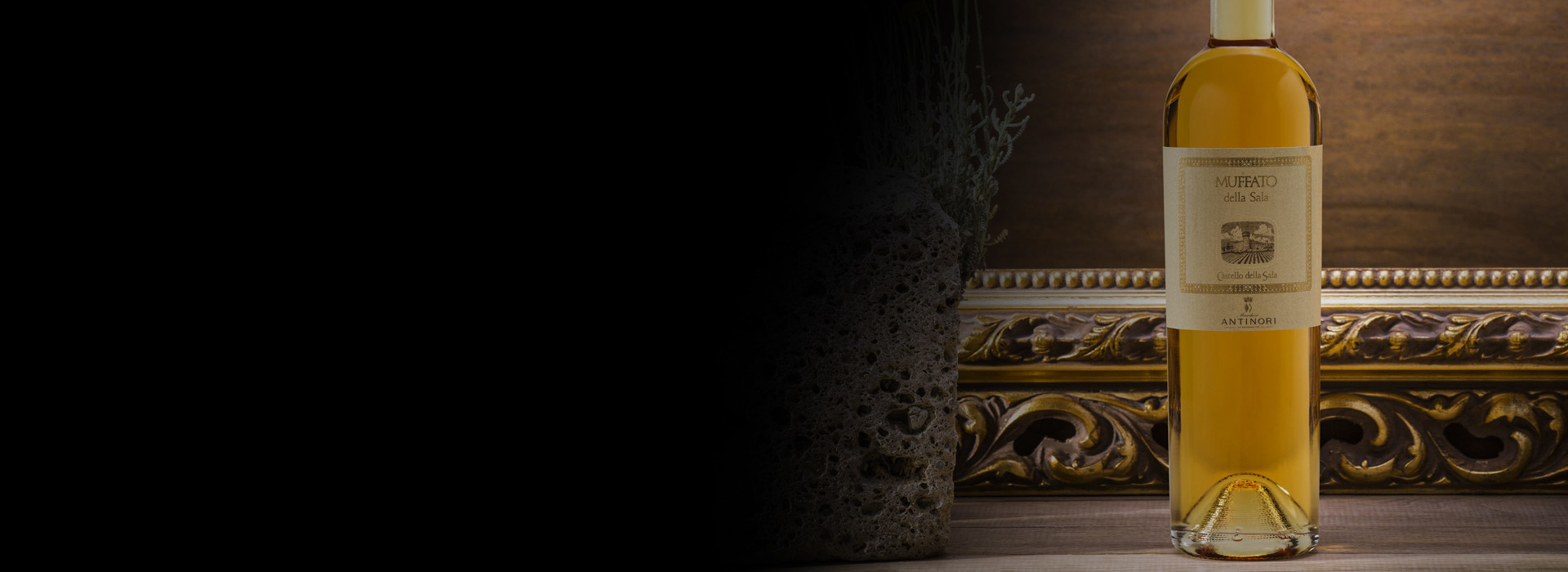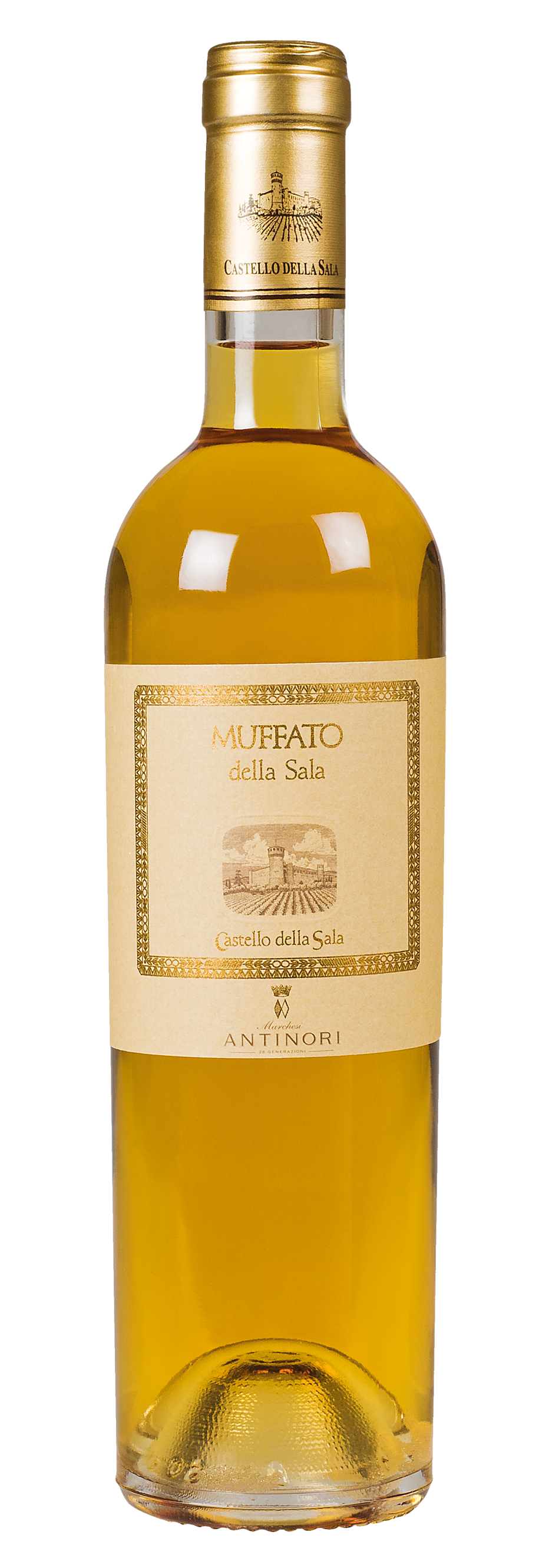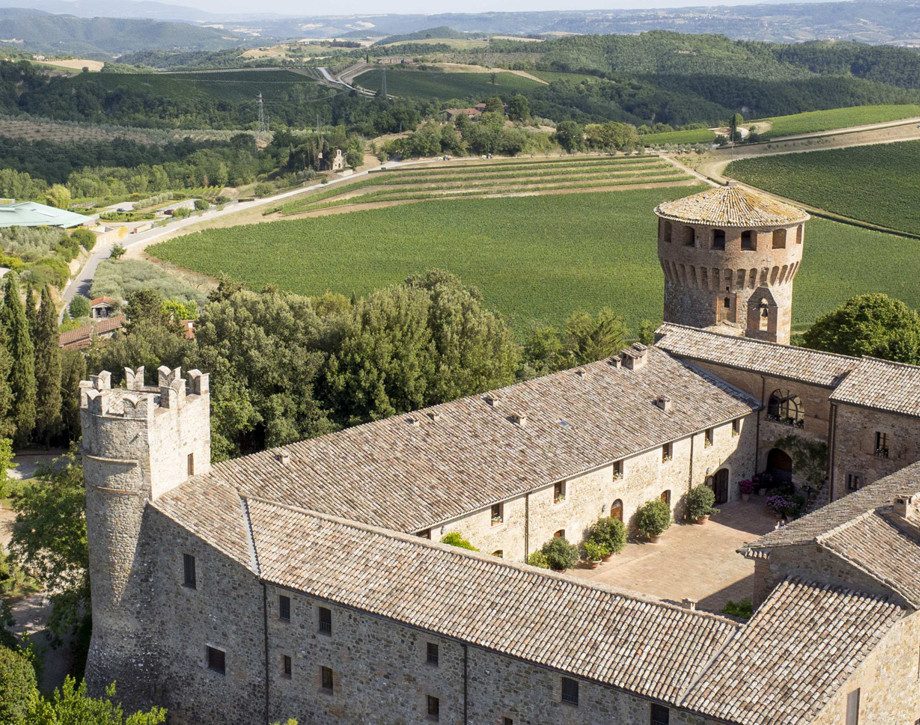Muffato della Sala

Climate
Autumn 2004 was mild and much rainier than recent years. The winter that followed was cold and dry, which compensated considerably for the level of accumulated rain from the autumn. Budbreak was slightly late although the spring temperatures enabed the plants to recover well. The summer was mild and temperatures did not exceed a maximum of 35°C. The grapes ripened gradually and steadily. The foggy mornings and sunny afternoons in October and November caused perfect development of botrytis and consequently excellent concentration of sugars and aromas.
Vinification
The grapes were grown in the Castello della Sala vineyards, at altitudes between 200 and 300m a.s.l. on clayey soil rich in marine fossils. The grapes developed Botrytis Cinerea and were brought to the cellar with perfectly balanced sugar and aroma concentration. The harvest began in October and lasted until November. The morning mists ensured the presence of botrytis and water loss was facilitated by the afternoon sunshine. The Traminer and Riesling grapes were harvested a few days before the Sauvignon Blanc, while the Grechetto grapes were harvested in late October and early November. After soft crushing the must was fermented for about 20 days at a temperature of about 17°C. The sweet wine obtained was placed in French oak barriques (Alliers and Troncais) where it remained for about 6 months. The wine was then blended and bottled.
Historical Data
Muffato della Sala is produced with grapes with “noble rot”, harvested in late October and early November to allow the morning mists to develop of Botrytis Cinerea, or noble rot on the grape berries. This type of mould concentrates the water of the crop, its sugars, and its aromas, endowing the Muffato della Sala with a harmonious and unmistakable fragrance. The first year to be produced was the 1987 and consisted of the blend of varieties such as Sauvignon Blanc (50%); Grechetto (30%) and Drupeggio (20%). The composition of the blend has varied over the years and now has attained its definitive results. Muffato della Sala is a fascinating wine, an expression, in small quantities, of the nature of a unique terroir.
Tasting Notes
Medium-gold color with peachy-honey aromas. A rich dessert wine that is fresh and well-balanced, with great elegance and complexity.

The Wine
This fascinating wine is a blend of Sauvignon Blanc, Grechetto, Traminer, Sémillon and Riesling affected by Botrytis Cinerea (noble rot). The morning mists and local microclimate favour the development of this rot which reduces the water content of the grapes. The resulting concentration of sugars and aromas give the Muffato its special and unmistakeable flavour.

Climate
Autumn 2004 was mild and much rainier than recent years. The winter that followed was cold and dry, which compensated considerably for the level of accumulated rain from the autumn. Budbreak was slightly late although the spring temperatures enabed the plants to recover well. The summer was mild and temperatures did not exceed a maximum of 35°C. The grapes ripened gradually and steadily. The foggy mornings and sunny afternoons in October and November caused perfect development of botrytis and consequently excellent concentration of sugars and aromas.
Vinification
The grapes were grown in the Castello della Sala vineyards, at altitudes between 200 and 300m a.s.l. on clayey soil rich in marine fossils. The grapes developed Botrytis Cinerea and were brought to the cellar with perfectly balanced sugar and aroma concentration. The harvest began in October and lasted until November. The morning mists ensured the presence of botrytis and water loss was facilitated by the afternoon sunshine. The Traminer and Riesling grapes were harvested a few days before the Sauvignon Blanc, while the Grechetto grapes were harvested in late October and early November. After soft crushing the must was fermented for about 20 days at a temperature of about 17°C. The sweet wine obtained was placed in French oak barriques (Alliers and Troncais) where it remained for about 6 months. The wine was then blended and bottled.
Historical Data
Muffato della Sala is produced with grapes with “noble rot”, harvested in late October and early November to allow the morning mists to develop of Botrytis Cinerea, or noble rot on the grape berries. This type of mould concentrates the water of the crop, its sugars, and its aromas, endowing the Muffato della Sala with a harmonious and unmistakable fragrance. The first year to be produced was the 1987 and consisted of the blend of varieties such as Sauvignon Blanc (50%); Grechetto (30%) and Drupeggio (20%). The composition of the blend has varied over the years and now has attained its definitive results. Muffato della Sala is a fascinating wine, an expression, in small quantities, of the nature of a unique terroir.
Tasting Notes
Medium-gold color with peachy-honey aromas. A rich dessert wine that is fresh and well-balanced, with great elegance and complexity.

Castello della Sala
Castello della Sala is located in the Umbria region, not far from the Tuscan border, about 18 kilometers from the historic city of Orvieto. The Medieval castle’s property extends over an area of 600 hectares (1482 acres), 229 hectares (495 acres) are planted with vineyards at an altitude that varies between 220 and 470 meters above sea level (722/1541 feet) on the gently rolling hillsides that characterize the beautiful countryside in this area. Castello della Sala is the perfect place for growing white varieties. The vines grow in clay and calcareous based soils, rich in fossil shells, and they are well exposed to the rising of the sun with an excellent difference of temperature between day and night. The one exception to the rule is Pinot Noir, the only red variety that has found in this area ideal growing conditions to best express its full potential.

Soil
Clay soils rich in deposits of marine fossils.


















